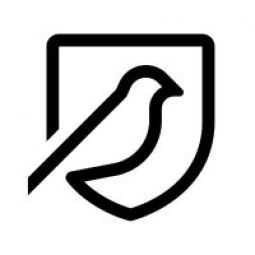Technology Category
- Robots - Wheeled Robots
Applicable Industries
- Buildings
- Healthcare & Hospitals
Use Cases
- Construction Management
- Onsite Human Safety Management
Services
- System Integration
About The Customer
Established in 1967, McAleer & Rushe is a specialist design & build contractor delivering high-quality buildings across the UK & Ireland. They work with a wide variety of clients within the hotel, office, residential, and student accommodation sectors. The company is highly accredited, particularly in the health and safety sector. Based in Belfast, Northern Ireland, McAleer & Rushe employs 300 people and works with over 3000 subcontractors across 25 sites in the UK and Ireland.
The Challenge
McAleer & Rushe, a specialist design & build contractor, faced significant challenges with their health and safety processes. Prior to digitization, up to 200 people within the organization were using a paper-based, in-house system to report hazards. This system was not only time-consuming but also prone to delays and potential data inaccuracies. The paper-based system also made it difficult to track and follow up on incidents, ensuring that related actions had been completed. Furthermore, the system did not allow for any significant analysis of health and safety data. The process of collecting hazard data had become a tick box exercise, leaving virtually no time to focus on areas that needed attention.
The Solution
McAleer & Rushe implemented the EcoOnline system to digitize their health and safety processes. This system provided live updates on hazards and incidents, significantly improving the efficiency and accuracy of reporting. The EcoOnline system includes a mobile app, which has been instrumental in reporting hazards. Over the past 12-13 months, 14,000 hazards have been reported across 25 sites in the UK using the mobile app. The app allows for on-the-go hazard reporting, with employees being able to attach images and pinpoint exact locations for their observations. Additionally, the app and Incident Reporting Software feed data collected during the week into a monthly report. This allows management to focus on what has gone wrong and areas that need attention.
Operational Impact
Quantitative Benefit

Case Study missing?
Start adding your own!
Register with your work email and create a new case study profile for your business.
Related Case Studies.

Case Study
Energy Saving & Power Monitoring System
Recently a university in Taiwan was experiencing dramatic power usage increases due to its growing number of campus buildings and students. Aiming to analyze their power consumption and increase their power efficiency across 52 buildings, the university wanted to build a power management system utilizing web-based hardware and software. With these goals in mind, they contacted Advantech to help them develop their system and provide them with the means to save energy in the years to come.

Case Study
Hospital Inventory Management
The hospital supply chain team is responsible for ensuring that the right medical supplies are readily available to clinicians when and where needed, and to do so in the most efficient manner possible. However, many of the systems and processes in use at the cancer center for supply chain management were not best suited to support these goals. Barcoding technology, a commonly used method for inventory management of medical supplies, is labor intensive, time consuming, does not provide real-time visibility into inventory levels and can be prone to error. Consequently, the lack of accurate and real-time visibility into inventory levels across multiple supply rooms in multiple hospital facilities creates additional inefficiency in the system causing over-ordering, hoarding, and wasted supplies. Other sources of waste and cost were also identified as candidates for improvement. Existing systems and processes did not provide adequate security for high-cost inventory within the hospital, which was another driver of cost. A lack of visibility into expiration dates for supplies resulted in supplies being wasted due to past expiry dates. Storage of supplies was also a key consideration given the location of the cancer center’s facilities in a dense urban setting, where space is always at a premium. In order to address the challenges outlined above, the hospital sought a solution that would provide real-time inventory information with high levels of accuracy, reduce the level of manual effort required and enable data driven decision making to ensure that the right supplies were readily available to clinicians in the right location at the right time.

Case Study
Intelligent Building Automation System and Energy Saving Solution
One of the most difficult problems facing the world is conserving energy in buildings. However, it is not easy to have a cost-effective solution to reduce energy usage in a building. One solution for saving energy is to implement an intelligent building automation system (BAS) which can be controlled according to its schedule. In Indonesia a large university with a five floor building and 22 classrooms wanted to save the amount of energy being used.

Case Study
Powering Smart Home Automation solutions with IoT for Energy conservation
Many industry leaders that offer Smart Energy Management products & solutions face challenges including:How to build a scalable platform that can automatically scale-up to on-board ‘n’ number of Smart home devicesData security, solution availability, and reliability are the other critical factors to deal withHow to create a robust common IoT platform that handles any kind of smart devicesHow to enable data management capabilities that would help in intelligent decision-making

Case Study
Gas Pipeline Monitoring System for Hospitals
This system integrator focuses on providing centralized gas pipeline monitoring systems for hospitals. The service they provide makes it possible for hospitals to reduce both maintenance and labor costs. Since hospitals may not have an existing network suitable for this type of system, GPRS communication provides an easy and ready-to-use solution for remote, distributed monitoring systems System Requirements - GPRS communication - Seamless connection with SCADA software - Simple, front-end control capability - Expandable I/O channels - Combine AI, DI, and DO channels







